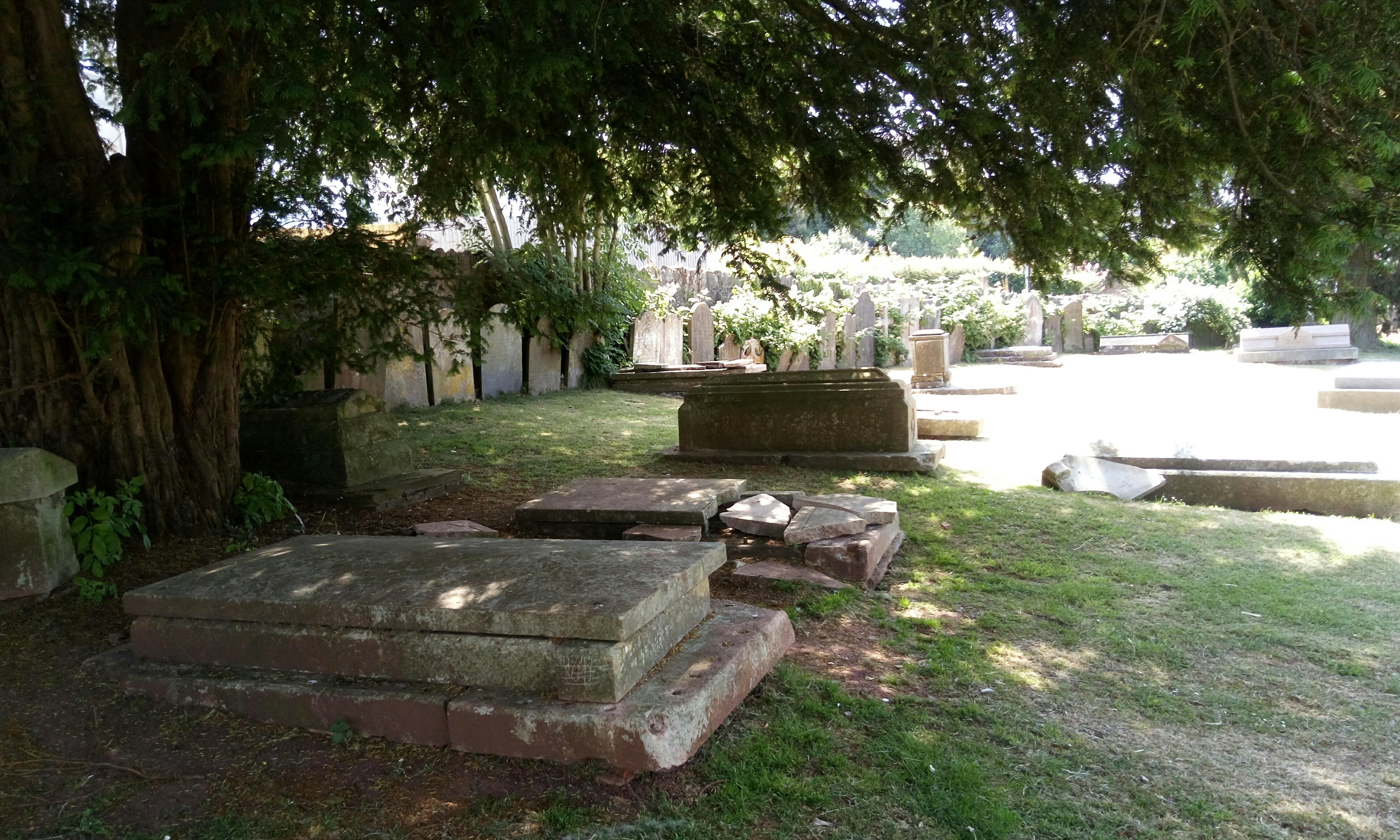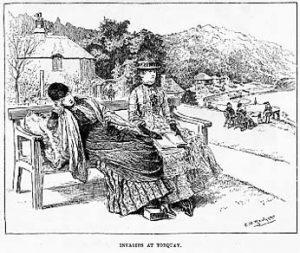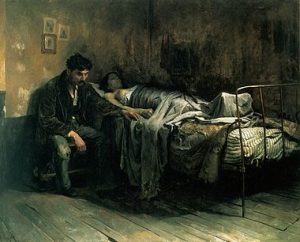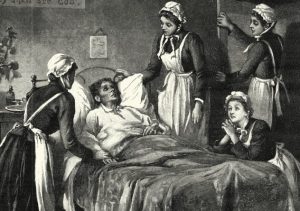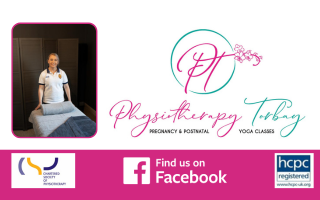In 1840 Dr AB Granville visited Torquay and described a town of the sick and dying. He wrote, “The Frying Pan along the Strand is filled with respirator-bearing people who look like muzzled ghosts, and ugly enough to frighten the younger people to death”. Torquay was, “the south west asylum for diseased lungs”.
The hotels were, “filled with spitting pots and echoing to the sounds of cavernous coughs, while outside the only sound to be heard was the frequent tolling of the funeral bell… awful and thrilling to the rest who were trembling on the verge of their grave with symptoms of the same devouring malady, Consumption”.
In 1838 alone there were 38 Torquay deaths from this disease.
Consumption was a common term for the wasting away of the body, particularly from pulmonary tuberculosis (TB), an infectious disease generally affecting the lungs. It was called ‘The White Death’ and before 1850 it was responsible for one in four deaths in England – until the 1870s it was the biggest killer of British people. The classic symptoms of TB were a chronic cough with blood-containing sputum, fever and night sweats. It was called ‘Consumption’ due to another obvious symptom- weight loss.
Tuberculosis is spread through the air when people who have active TB in their lungs cough, spit, speak, or sneeze. Before the Industrial Revolution, consumption was often associated with vampires- one member of a family would die and then others would slowly lose their health. And even when Richard Morton established that a disease was the cause in 1689, the variety of its symptoms didn’t suggest a single infection until the 1820s. Then in 1839 JL Schonlein coined the name ‘tuberculosis’, though the term Consumption remained.
So why was Torquay such a focus for those with TB?
It was because so many came to be cured, to recover and perhaps to stay in our consumption hospitals. Inevitably some didn’t regain their health and lie in the churchyard at Torre.
Although each health resort had long attracted large numbers of those seeking wellbeing, therapists disagreed on which climates were best suited to treating Consumption. However, in 1830, a Dr. Clark praised Torquay, claiming that the town, “possesses all the advantages of the South-Western climate in the highest degree” for the treatment of Consumption. And in 1831 the Irish surgeon James Johnson wrote a very successful book, ‘Change of Air, or the Diary of a Philosopher in Pursuit of Health and Recreation’, which recommended visiting health-giving resorts.
Medical and social perceptions of the disease then encouraged affluent patients to go for the ‘Change of Air’. In 1850, 90% of travelling British invalids suffered from Consumption and until the 1870s they dominated the peripatetic ailing community.
Initially TB wasn’t even seen negatively- it generated an income for the many hotels across town. And for centuries tuberculosis was associated with poets and artists and known as ‘the romantic disease’. Visitors to Torquay who suffered from the illness include Percy Bysshe Shelley, Robert Louis Stevenson, Elizabeth Barrett Browning and Charles Kingsley.
Crucially, TB wasn’t seen as being infectious. It was understood to be hereditary. Even by the 1870s it was widely held that though you didn’t actually inherit the disease but rather a disposition toward it – it could be activated by environmental factors, including squalid living conditions and sinful indulgences.
Yet, this changed in the 1880s when TB was determined to be contagious and was put on a notifiable disease list. Consumption then quickly lost any glamour it may have once had and came to be seen as a threat to public health and decency. Public fears about infection, and telltale practices as coughing and spitting became both medical and social anathema. Campaigns began to ‘encourage’ the infected poor to enter prison-like hospitals – in contrast, the sanatoria for the middle and upper classes offered good care and medical attention.
And then in 1887 another health professional, Dr. Lindsay decided that Torquay had a climate, “too relaxing to be generally suitable for Consumption”. This was part of a general abandonment of seaside resorts for Consumption therapy and a growing appreciation for mountain resorts, inland resorts, and the traditional sea voyage.
In 1906 Albert Calmette and Camille Guerin achieved the first genuine success in immunization against tuberculosis. The BCG vaccine was first used on humans in 1921 in France and achieved widespread acceptance in the US, Great Britain, and Germany only after World WarTwo. By then Torquay had long lost its association with the disease, but not with other health related issues. In 1930 Torquay was being recommended for, “Persons who have returned from the tropics”:
By the 1950s TB mortality in Europe had decreased by around 90%. Improvements in sanitation, vaccination, and other public-health measures had significantly reduced rates of tuberculosis even before the arrival of antibiotics, although the disease remained a significant threat. And it hasn’t gone away entirely – between 2014 and 2016 twenty new cases of TB were reported in Torbay.
You can join us on our social media pages, follow us on Facebook or Twitter and keep up to date with whats going on in South Devon.
Got a news story, blog or press release that you’d like to share or want to advertise with us? Contact us


